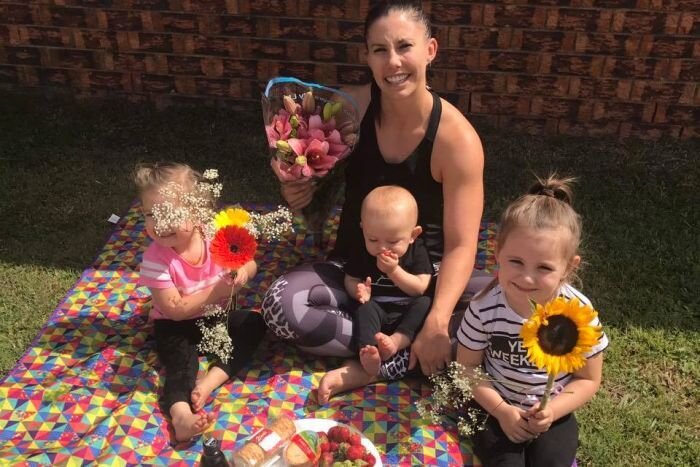How We Understand Domestic Violence
As women in our Sixties, I believe our responsibility to society is to speak up, connect with others and make a difference. The problem with domestic violence is, it is scary and it is getting worse. Our first step is to understand exactly what it is, listen to those close to us because with the stark reality of statistics - it IS close to us. I found the following information on www.dvrcv.org.au for us to learn more.
Their tag line is: Preventing Violence; Promoting Respect!
Domestic violence takes different forms and may be known as different things.
Domestic violence is also commonly known as:
Family violence
Relationship violence
Intimate partner violence
Child abuse
Domestic violence is common in Australia.
It is a pattern of abusive behaviour through which a person seeks to control and dominate another person.
Domestic violence does not take the form of a single incident. It is ongoing behaviour that gradually undermines the victim’s confidence and ability to leave the violent person. The severity and frequency of violence often escalate over time.
A family with hidden secrets.
This violence takes many forms, none of which is mutually exclusive. While physical violence may be the most visible form, others such as sexual, emotional, social, spiritual and economic abuse can be equally harmful.
Examples include:
isolating a victim from family and friends
controlling their access to money
diminishing their self-esteem
preventing them from practising their religious beliefs
intimidating them, and
threatening them.
Domestic violence is common in Australia. It is complex, and different from other forms of interpersonal violence.
Where does it happen?
Domestic violence happens in all kinds of relationships, including:
intimate: partners, lovers, husband and wife, ex-partners
older people and their children (elder abuse)
other family members, including step-parents
parents and their teenage or adult children
friends
people with disabilities and their carers
When domestic violence occurs between adults in heterosexual relationships, research shows that men are most likely to be the perpetrators and women the victims.
When the violence occurs against children in families, research shows that parents and step-parents are most likely to be the perpetrators.
Children and young people also experience violence when they live with and/or witness violence between other family members.
Domestic violence is a denial of human rights and it causes significant harm
Being violent to another human being is a denial of that person’s human rights, which governments have a responsibility to protect under international law.
In Australia, some forms of abuse—such as physical and sexual violence and the threat of such violence—are criminal offences.
Domestic violence causes significant and long-term harm to its victims and is costly to the community. Relevant factors include being dispossessed of land and traditional culture, the breakdown of community kinship systems and law, entrenched poverty, alcohol and drug abuse, child removal policies, inherited grief and trauma, and the loss of traditional male and female role models.
While domestic violence occurs across all social groups, socio-economic inequalities are also linked to the experience of violence, and the ability to access resources to recover from it. Economic policies also impact people’s lives in a way that relates to but does not excuse the use of violence.
Where age inequalities are concerned children and young people are particularly vulnerable to abuse in families. This is due to their dependence on family members, and to the way that society views children as being, for example, the property of their parents, or prone to ‘make up’ stories of abuse.
However, some forms of domestic violence are not well explained by reference to theories of gendered social power. Violence also occurs in lesbian relationships, and some women in heterosexual relationships are violent towards their male partners. In addition, many people who have social privilege over others do not abuse this through violence. Individual choices, experiences and motivations must also form part of any explanation for relationship violence.
Social and economic factors also influence people’s ability to escape abusive relationships. Perpetrators of abuse often use this to their advantage. For example, a woman with a disability may be reliant on the abuser for care, which can make leaving the relationship extremely difficult. Members of Aboriginal or non-English speaking communities, for example, may be afraid to contact police about the abuse because of the risk of discrimination based on their culture, race or language. These broader social issues of discrimination and marginalisation have to be addressed if we are to prevent abuse.
Domestic violence needs a social and political response
In a society in which social and economic resources and power are unevenly distributed, working to eliminate domestic violence involves social change and political action that will promote respectful relationships. Political action for social change should be informed by the experiences of survivors of violence.
In the policies and practices of institutions, including government, violence can be implicitly accepted. Working to reduce violence will also be resisted by those who benefit from it.
Eliminating domestic violence requires a strong criminal justice response to the violence. However it also requires a range of interventions that may differ from traditional approaches to crime and prosecution. For example, where domestic violence is concerned, it can be difficult for its victims to leave the relationship or charge the offender, as such interventions have the potential to cause an escalation in the violence. In addition, victims of violence often remain connected to the abuser, through children and other family members. For these reasons, a single response to the violence, such as arrest, the laying of criminal charges, or leaving the perpetrator, will not necessarily end the violence or intimidation. Victims of violence have the right to use the legal system in ways which they consider will best improve their safety.




